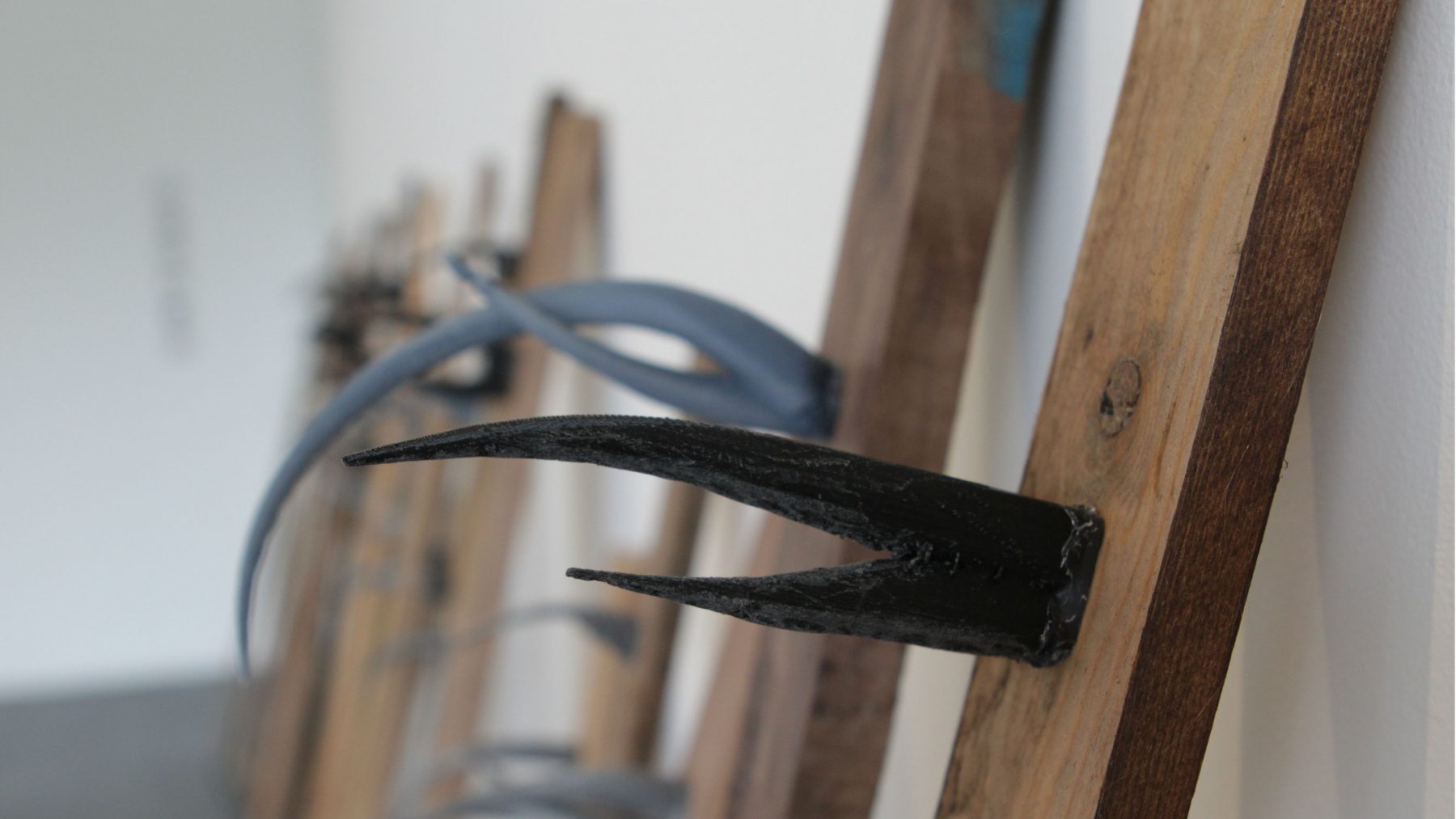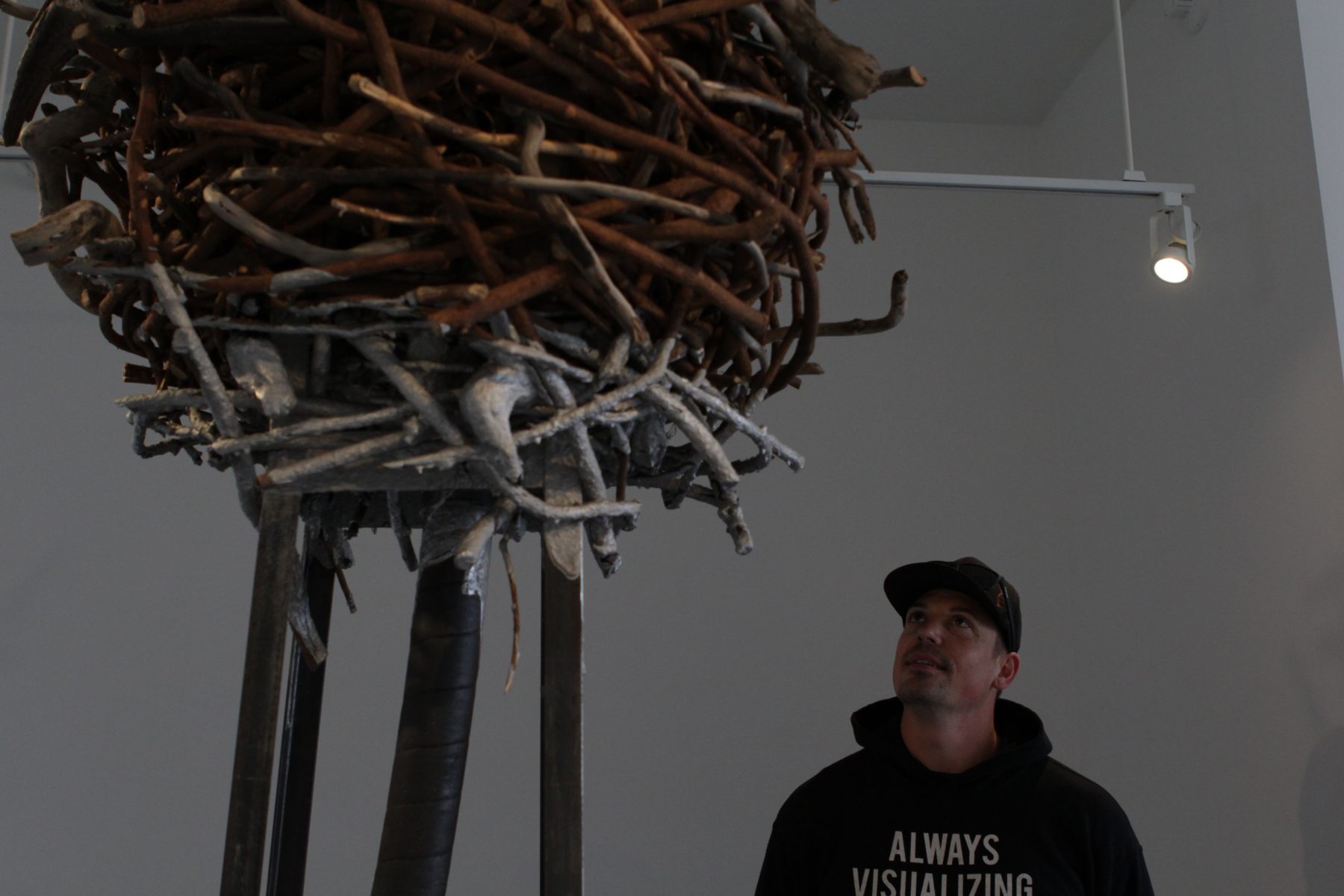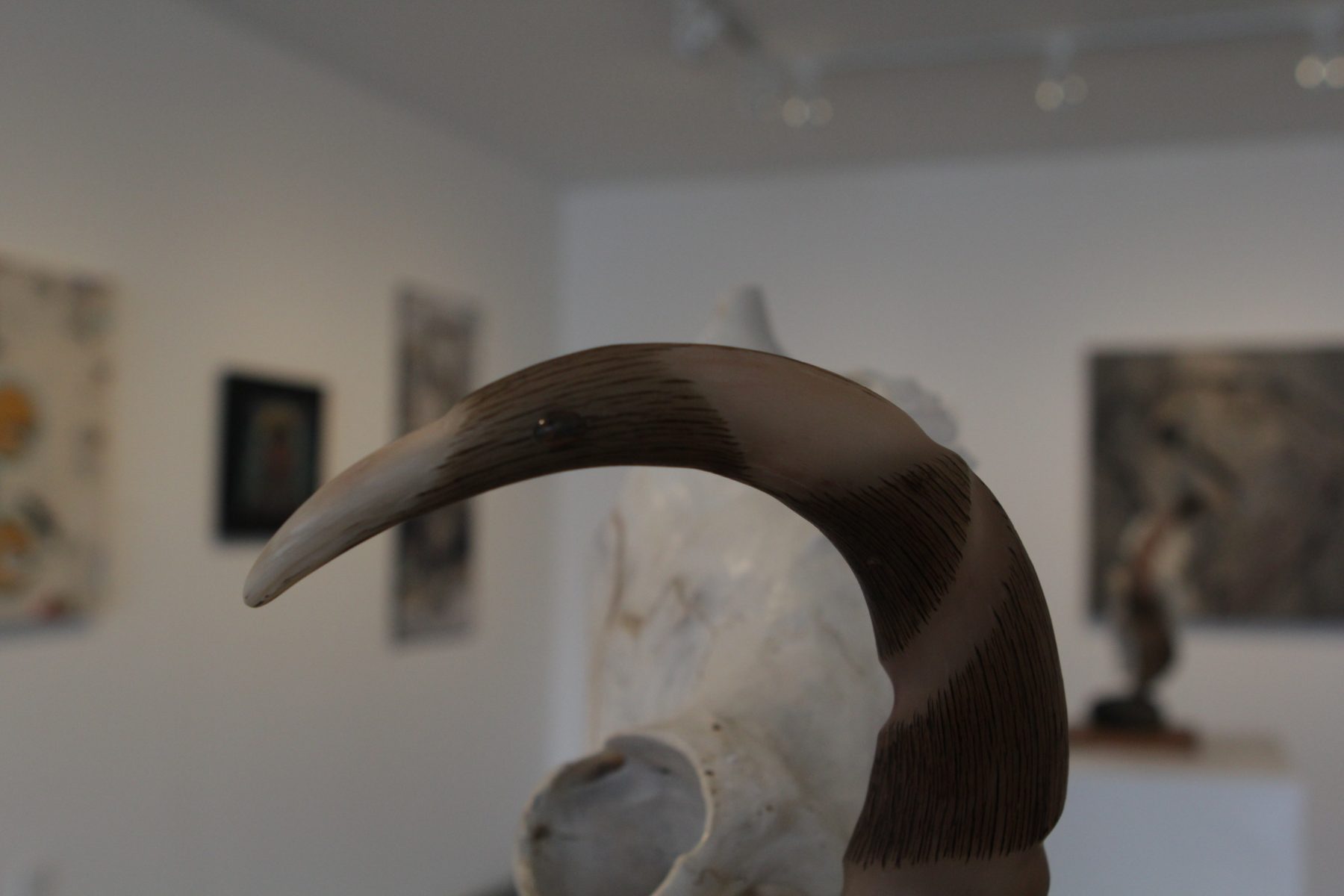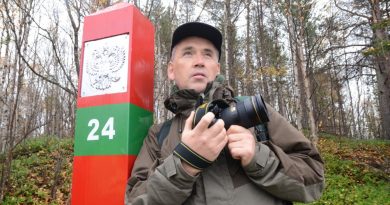Art exhibit in Alaska connects bird research to backyards

Art and science may seem like very different disciplines. But they converge in a new exhibit in Anchorage, southcentral Alaska at the International Gallery of Contemporary Art.
It’s called Birds on the Edge: Dynamic Boundaries. And it opened earlier this month, in time for the annual meeting of the American Ornithological Society.
Sandra Talbot is a research geneticist and an artist.
She said when it comes to the new downtown exhibit, the idea was to see science and art tackling questions of conservation and ecology together.
“Artists represent somebody different than a scientist usually,” Talbot said. “And scientists represent something different than an artist usually. And both of them represent the public, in a way. And how can they work together?”
Talbot is one of three U.S. Geological Survey scientists who curated the exhibit.
Colleen Handel is another. Handel studies the effects of climate change on migratory birds. Together the two brought pieces like Leslie Sharpe’s “Beak Disorder” to display.
The installation combines weathered wood with 3-D printed beaks modeling different deformities.
The deformities are a science mystery researchers like Handel have been studying for over 20 years.
In Alaska it affects black-capped chickadees and northwestern crows.
Handel said works of art like Sharpe’s help people connect the science to their own backyards.
“They can then start to ask these questions: Well, what is happening and why is it happening and what can I do about it?”

Along another room in the gallery, Anchorage 3-D artist David Joel tried to do something similar with his sculpture “And Then There Was Light.”
“It’s kind of a large nest construction that’s sorta attached to a steel structure, so it’s that idea of the natural environment colliding with the built environment,” Joel said.
That nest connects to what Joel described as an old-timey gramophone by a long metallic-colored hose. If you lean in close, you hear raven calls collected locally by Joel and then distorted to sound almost like pterodactyls.
“When I hear the ravens in this way, I hear the fight and the struggle to set the sun, moon and stars free and give light to the world,” Joel said, referencing Native Alaskan stories he’s encountered relating to the bird.
In researching the piece, Joel found out ravens are the largest song bird.
It’s a back and forth between art and science that Handel wants to see continue. She hopes researchers leave the conference this year seeing art as a tool.
“Go home and think about how to communicate your science through art. Get the word out to artists about what’s happening and let them show the world what is happening through their eyes,” Handel said.

Handel said it’s especially important for birds in the north. She points out that like the title of the exhibit, birds in Alaska are on the edge of the continent.
You can see Leslie Sharpe and David Joel’s pieces among others that look at sustainability, decline, and habitat loss — among other themes — at the International Gallery of Contemporary Art now through June 29.
Additional American Ornithological Society events are taking place throughout the month.
Related stories from around the North:
Canada: Career criminal was snatching eggs from rare birds around the world – including in Northern Quebec, CBC News
Finland: As habitats shrink, white-tailed eagles congregate near homes in western Finland, Yle News
Norway: In Arctic Norway, seabirds build nests out of plastic waste, The Independent Barents Observer
United States: Alaska museum exhibit gives unique look at pingoes, Alaska Public Media



